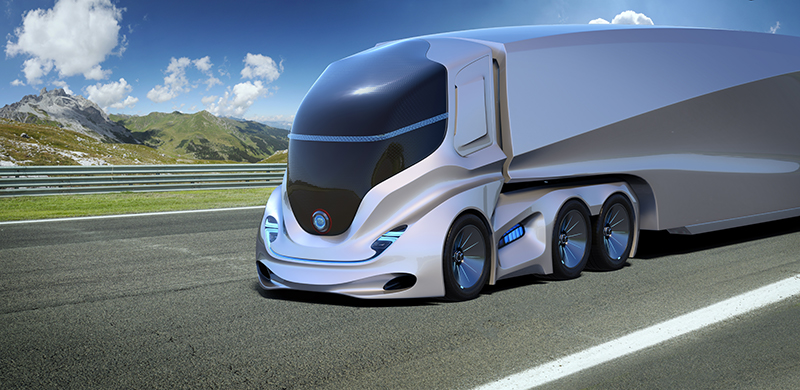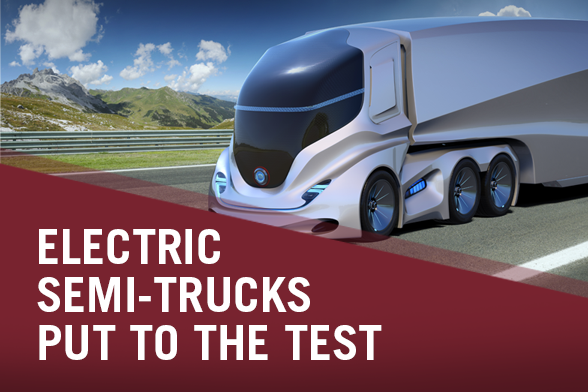[vc_row][vc_column][vc_column_text css=”.vc_custom_1576603938645{margin-bottom: 0px !important;}”]
We live in a world of promises. In fact, we make promises to our customers multiple times every day. “Don’t worry, your freight will arrive. I promise.”
We can make these promises with confidence because we can point to tangible proof points to support them. Our customers can use a carrier scorecard to rate us. They can use anecdotal evidence from past experiences. Or, they can simply look at the clock to see if freight arrived on time.
It’s a stark contrast to what’s happening right now with the buzz surrounding electric semi-trucks. Tesla, Daimler, Volvo, Nikola and Renault are hyping large electric trucks — hard. Roger Alm, President of Volvo Trucks, recently said this about developing its new electric rig, “…electrified transport solutions meet high requirements in terms of performance, driving distances, cargo handling and vehicle use.”
All the manufacturers are promising big things. Let’s take a closer look:
- Cost Savings. They promise lower costs per mile because of the lower cost of electricity. But with a purchase price about 50% more than a standard semi-truck, and a typical four-year lifecycle for rigs, those savings need to add up quickly. Plus, the battery is the hub of this technology. How will it hold up over 500k+ miles — and how much will it be to repair or replace it? As every fleet owner knows, we need concrete details and proof points about lifetime cost of ownership before we invest hundreds of thousands, or even millions of dollars, into our fleet.
- Power. Tesla suggests that its semi can reach 60 mph in only 20 seconds with a loaded 80,000 trailer. For the uber-safety conscious however, we worry about stopping power even more. Today’s brakes are great, but we use the power of the engine brake when necessary for the extra kick to avoid danger. Will the new electric vehicles be powerful enough to stop as quickly?
- Range. Manufacturers claim ranges will reach between 250 and 750 miles, while touting that about 80% of deliveries are shorter than 250 miles. But that promise suggests that most drivers will need to recharge after a single run, or even during a run. How long will that take? Where will it be? Currently, drivers can get up to 1,200 miles on a single tank — and the time and resources required for refueling can be accurately predicted.
- Safety. Every driver wants more comfort, and fewer distractions, on the road. With less space devoted to the engine, manufacturers promise more space and comfort for drivers. In theory, this could lead to greater levels of safety. Unfortunately for those hoping it could lead to lower insurance rates, there’s no proof — until we have real-world results. In an industry already decimated by escalating insurance costs, is it smart to be on the hook for insuring a more expensive, unproven technology? Rates, at least short term, will be higher.
Putting a plug in it
I’m a huge advocate when it comes with new technologies that help us keep drivers safe, improve efficiencies and enhance our profitability. We’ve taken pride in adopting new technologies, including new APUs, automatic transmission rigs and back-office logistics software, ahead of our competition. But I have serious reservations about being an early adopter for such a big-budget investment with so much uncertainty.
I look forward to moving beyond manufacturer promises — and using real-world tangible evidence to transition to electric semi-trucks. But we need evidence that production processes and supply chain, battery technology and charging, insurance rates and ROI challenges can be resolved first.
The promise is there. I just need proof that the vehicles can deliver on it.
Taylor White, AMX Vice President, Operations
[/vc_column_text][/vc_column][/vc_row][vc_row][vc_column width=”1/6″][/vc_column][vc_column][/vc_column][vc_column][/vc_column][vc_column][/vc_column][/vc_row][vc_row][vc_column][/vc_column][/vc_row]


